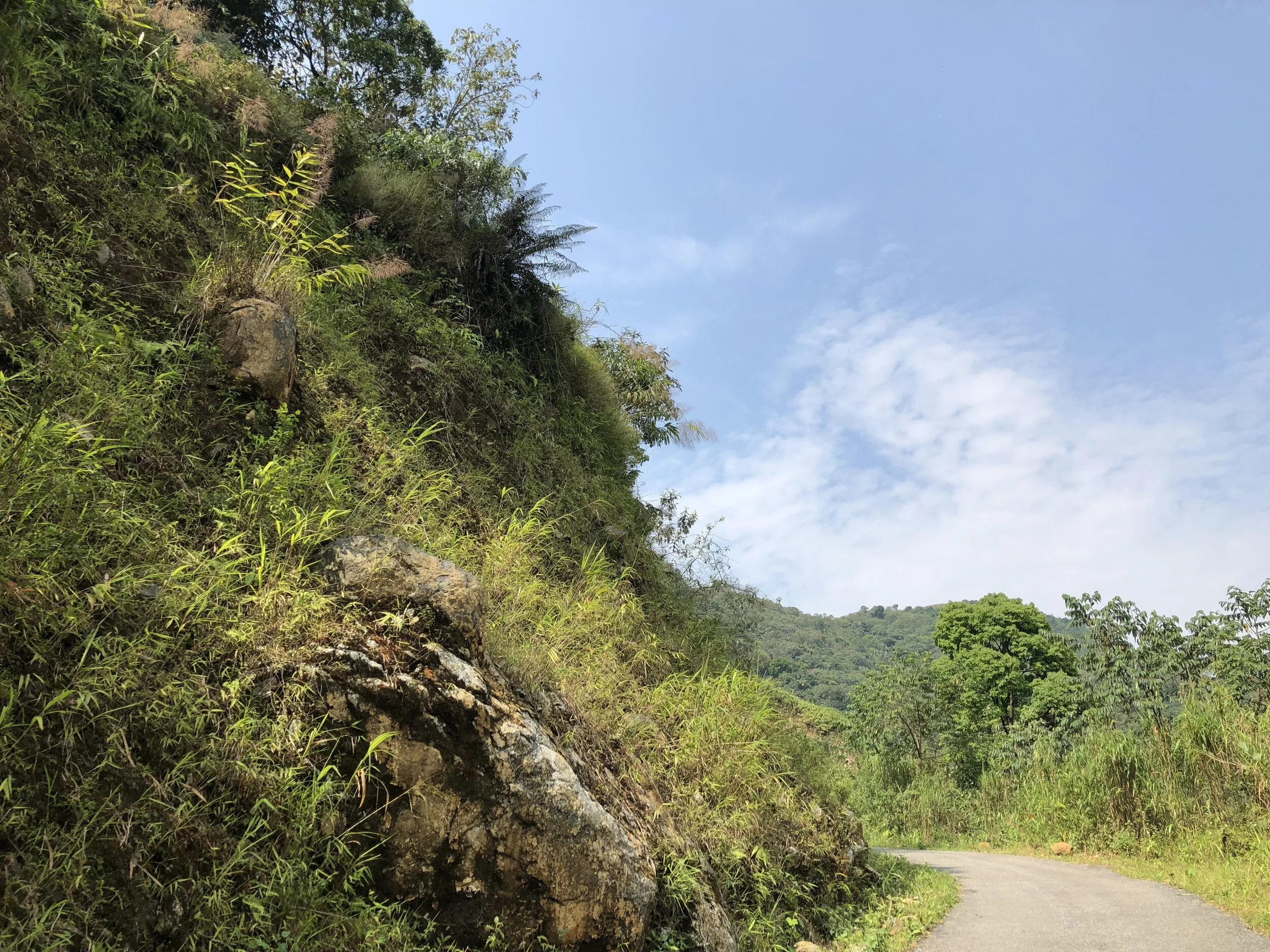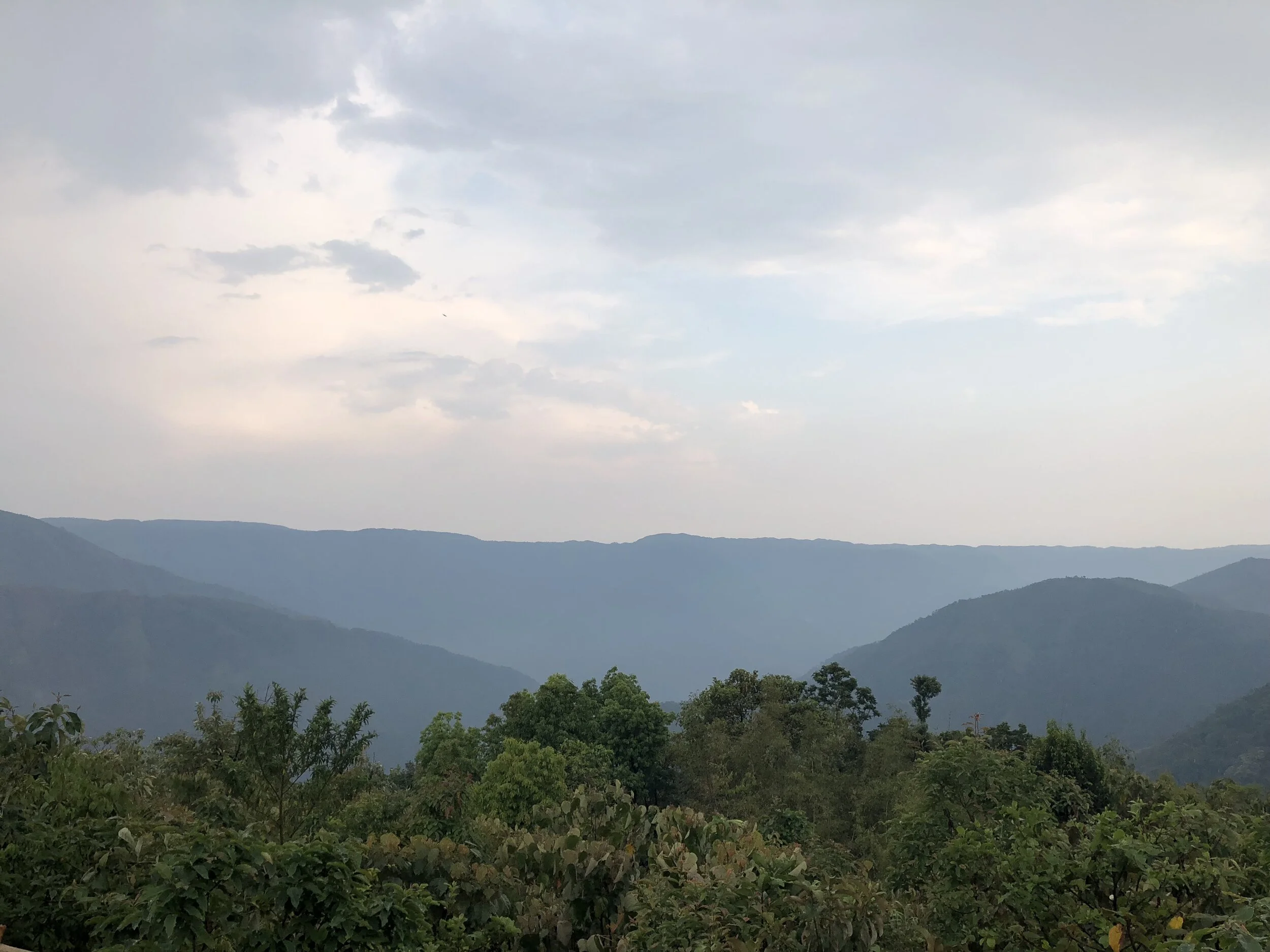Lessons from KongThong
“Hi Sandwich, I was wondering if you wanted to come to KongThong next month. I want someone to take some pictures and videos of my research. I think you will enjoy Kong Thong.” I grin as I read the text from Akanksha, an old friend from school. She had been developing a project in a small village in Meghalaya. I vaguely remember a few details from the last time we spoke. Details didn’t matter when it came to Akanksha, though. I knew I was going to take her up on the offer the moment I saw her text.
Akku, as I fondly called her, was a zen monk who didn’t know it just yet. She was lost in the world of plants all through school, hugging trees and enquiring about their health. She was mocked a lot for it, but that never seemed to irk her. She would always laugh along, and with the most innocent curiosity, ask, “Why don’t you guys try talking to them? They have so much to say!” I remember her teaching me how to breathe with a tree. I carry that moment with me always.
It was not much of a surprise that she grew up to study and deepen her relationship with the plant kingdom. We kept in touch, and met up whenever we could, but owing to living in different countries, over the years, our interactions became limited by our workload. “Meghalaya would be a good trip”, I say out loud as an affirmation. You see, I myself had been getting weary living and working in the city. A kind of existential dread had started to seep in. Some of my best memories were out in nature and as I got older and busy in the grind of the city, such moments had started to reduce in their frequency and it had been weighing on my heart. I booked my tickets and eagerly waited to once again, flow with Akanksha in her universe.
Tucked away in the east Khasi hills, KongThong is home to about 700 villagers who live in tiny bamboo huts, cultivate their land, hunt in the tropical dense forests and lead a life of extreme simplicity. To get there, I meet up with Akku in Shillong and we set out on a slow 2 hour rickety journey to the village. On approaching Khatarshnong Road, the last motor-able road, we are met by Rothell, our local contact at the Village. It was tough to tell his age, but his spirit was full of youth and energy. He was short and chubby, dressed like a city person, but navigated the hilly terrain with a natural ease. When he smiled, you could see what you would call a brilliant set of whites; if it weren’t for the heavy stains from some kind of chewing habit. Maybe tobacco? Or pan? I wonder. Excited to meet Akku, he rants off into a string of activities that he’s been monitoring since her last visit. His eyes light up when Akku tells him I’m going to be taking pictures and videos of the research.
“We need people to learn more about us. We have so much knowledge in our lands and our communities, we want to share it with the world. he says, his eyes deepening with emotion. I pick up on a refreshing mix of humility and pride, as he leads us up a rocky road to our hut.
Overlooking the valley, two traditional bamboo huts are stacked on the slope, one below other. Wild bushes brimming with flowers and fruits surround the hut. The inside of the hut is simply a large rectangular area with mattresses laid down on all three sides and a fireplace in the centre.
The next morning, we set out to work. Akku was catching up on what’s been happening since her last visit. The people of Kongthong practice “Jhum Farming” This is where they cultivate crops in a marked region of the hill for a year. Once the year ends, they burn it down and move their cultivation elsewhere, allowing for the land to regenerate on it’s own over the next 4-5 years. This allows for a natural balance to be maintained. Some families even leave their land to regenerate for up to 20 years, thus creating what looks like patches of secondary forests.
Patch of land that has been burned down and left idle allowing for it to regenerate.
"This keeps the mountain healthy”, Rothell tells me. “But nowadays, this is difficult to do and not cost effective either. For our elders, it was them, the hills and the skies. That was enough. Today, things are different. We are part of a bigger world. The younger generation doesn’t want to keep following these traditions, it’s too time consuming.”
Over the next few days, I start to unravel the many shades of this quiet village. From narrow trails that lead up to houses on stilts that seem to be from an era gone by, to climbing rocky terrains that lead to breathtaking views to wading through forests littered with jackfruit trees that grow during the monsoons. From pink and purple skies at sunset to the unique song like sounds of birds echoing from the valleys. From taking 10 minute breaks to sit silently and sip hot water every few hours to munching on blackberries from the tree behind our huts each morning. Sunday gatherings meant that the women came together to sing songs all day while the men & kids rounded up in the evenings at the flat land on the top of one of the hills to expel some energy through friendly competition.
One evening, as we sip on our hot water, Rothell asks me, Did you know, KongThong is also known as the ‘whistling village’?
“What do you mean?” I ask.
Rothell takes a small pouch from his pocket. There is a small betel nut, which he goes on to carve out bits from using a pocket knife. “When a woman is pregnant, she starts working on a particular tune - a song, like a bird call, By the time the baby is born, the tune has been cemented by the mother as her song of love for her baby.” , he says, as he puts his knife aside and begins to chew on the bits of the nut. The stain on his teeth is no longer a mystery to me.
“It’s very good. Keeps you focused and energised when you have to walk long and kills your hunger when there’s not enough to eat.”, he says, noticing my eyes following his movements.
“Would you like to try some?”, he asks. “Yes please,” I respond. He picks up his knife and begins the repetitive motions again.
“The tune”, I remind him.
“Oh yes! So there is a ceremony, before the baby is born, where all the elders gather around and approve the tune. You see, they need to make sure the mother’s tune does not overlap with another tune - every one of the 700 villagers have their own unique song! This then becomes the name of the baby, which the others will use to call out to him from across the hills. After the birth of the child, adults around it constantly hum that tune so that the baby can identify with the sound even before he learns to speak”
“Wait, so those tunes I’ve been hearing, echoing through the valley, they’re not birds?”
Rothell laughs, his shiny stained teeth flashing while his body shakes with amusement. “Some of them, maybe. But the unique ones that sound like songs, they’re just us calling out to each other!”
“What’s your name? Sing it to us!” I say
Rothell whistles out a beautiful tune. It echos in the valley and in my heart. “It started out a long long time ago, they say to help communicate while hunting”, he explains. "But it’s also a reminder of love, you know. We all have an English name and a Song name. When my mother is angry with me, she says “Rothell, come here! Why have you not done this?” Her ego is speaking to my ego. But when she is worried it’s getting dark and I’m not home yet, she sings my tune and I hear it echoing in the valley. When I hear that, I know, my mother’s soul is calling out to my soul, saying, “my son, where are you? Come home soon, I wait eagerly to see you again.”
“That’s the most beautiful thing I have ever heard”, I tell him.
“Next time you come, come for longer. We will make one for you as well!”, Rothell promises.
“Yes, we must. I would like to hear my soul’s song of love.”
There is a fog approaching. “Tomorrow, I take you to our medicine man. He is very wise.”, says Rothell.
Akku’s research involves identifying and translating the large number of medicinal plants naturally found in the region. She & Rothell hope to create alternate sources of income for the villagers so that the areas undergoing the process of regeneration are providing for them even when left untouched.
That night, as we sat sipping our water outside our hut, she tells me, “It’s in their blood - taking care of their land as though it were a member of their family.”
A tiny bird frantically flaps its wings and flies across the sky, now bathed in sunset colours.
“They see what’s happening around them in other villages and states. Mountains and hills disappearing in the name of development, infrastructure and prosperity. They worry that if they don’t do something before their number comes up, they too will have to watch their hills disappear slowly. They too want progress, but not at the cost of losing their heritage and ancestral knowledge.” She sighs, as though she is no longer sure if she is talking about them or herself anymore.
We sip our hot water while watching the steam rise up and blend into the foggy skies. “You know san,” says akku, “I’ve never really understood people. They’re so confusing - what they say, what they mean, how they think, what they expect from you, it’s all too confusing and inconsistent for me to comprehend sometimes. But plants and trees, they are simple. They know what their purpose is, they execute it, and they are aware they cannot do it alone. If you give them love and help them grow, they can be the best friends you can have. They are always up for a conversation without words. Only if you observe and listen. Almost like a secret code that just sits there in the world, waiting to be cracked. Why don’t more people see that?”
We sit in silence a little longer, absorbing the energy of the hills.
The fog starts to disappear slowly. The sky begins to sprinkle specks of sparkling light along it’s dark expanse.
A new day brings in a new character in our presence. The medicine man was all that I imagined him to be. Wise, old, and speaking softly, with the gleam of shaman in his eyes. He takes us around, sharing the knowledge of his ancestors - “This is for fever; you mix this and that and rub it on your tummy and let it be overnight. This grows only during the winters. This is for wounds - make a paste and apply it on the wound. It doesn’t help for burns. For burns, I use this. But not for a woman who is bleeding on her month. Never use it during that time of the month”, he warns us. We walked for hours though the narrow pathways going all through the hill behind his hut. Up and down, up and down. Stop and look. Smell, touch and chew. We were lost in a universe of plants. Watching Aku and the medicine man felt like watching two entwined souls, explorers of the realm of reality, from different corners of the world coming together in an appreciation and understanding of that which is overlooked by so many. They were both in on the secret. And they knew it.
Back at his hut, he insists we stay for a meal. We meet his wife, who surprisingly, is the opposite to his calm - bright and cheerful; full of a kind of energy that screams, I’m so excited to see you! Let me give you a very big hug! She welcomed us into her home, a tiny little hut with not enough space for all the love and generosity she kept showering us with. We didn’t speak much for we didn’t share a language. Yet, we shared so much, for nature had taught them to communicate without language for many years.
I notice a bag around her neck. I have seen something similar on the other women as well. I’m curious to find out more. Interestingly, here is what the women of Kong Thong carry around, wherever they go - A mirror, a pen, a comb, a lighter, betel leaves, betel nut, a carver to carve out the beetle nut, a small crusher to grind it, a couple of empty containers to store it and some cold tablets. Turns out, the women of Kongthong, indulge in their vices just as freely as the men of their village do!
After a homely meal topped off with some fresh honey eaten straight on the comb, KongThong style, we do a round of photography with the medicine man and his wife and head out to the village watering hole. It’s primarily an area designated as a wide square around the main pipeline that runs to the village. Overlooking the valley, we watch the children play as their mother’s are busy washing dirty laundry while chattering with amusement about the two strange girls from the city who have come and are fascinated with their lives.
That night was our last in KongThong. We decided to cook a meal for our hosts, a task that was as creative a process as it was challenging, considering the tools available. Jypsum, who would be incharge of the cooking sat nearby, watching a Van Damme movie on his phone, glancing occasionally at us with amusement, as we tried to comically work a manual grinder to grind our onions and tomatoes for the egg curry we bravely took on to make under their fire stove.
Later that night, we lay awake under the stars one last time, laughing at their amusement but humbled by their gratitude and joy at eating our curry, which I would perhaps grade only a 7/10. Knowing that we would be leaving soon, brought a sense of heaviness and our conversations drifted towards contemplating the universe we were going to leave behind.
Rothell was right. They had so much to share. So much to offer. We were all part of a bigger world, but a world where even a tiny little paradise like this can teach us so much, show us different ways of perceiving ourselves, our relationships with others and the impact nature can have on our identities and realities. I wondered about the various choices I made in life, ones that led me first to Akku and then to this land - an adventure that turned out to be an antidote to the anxieties and insecurities of the world today. The universe works in mysterious ways.
If you would like to learn more about Akanksha’s work, check out her website : www.savingsoils.org



















